Botox For Spasticity: Botulinum Toxin Products Work In Many Cases

Spasticity happens because of a lesion of the central nervous system that causes an abnormal increase in muscle tone. Common in cerebral palsy and multiple sclerosis, spasticity can also be the result of traumatic damage to the brain, spine or motor nerves that cause muscle tightening from prolonged contraction.
Treatment for spasticity can be as simple as exercise or physical therapy, and there are oral medications like baclofen, clonazepam, dantrolene, diazepam and tizanidine that can help. But these treatments are not always successful. In some cases, Botox for spasticity can be a safe and effective way to relieve the condition.
More About Botox For Spasticity
Research has shown that Abobot-A – a botulinum toxin product marketed under the name Dysport – and Onabot-A – which is marketed under the name Botox – are appropriate for treating spasticity of the upper and lower limbs. Incobot-A – referred to as Xeomin – has been shown to be appropriate for upper limb spasticity, and it is likely that Rimabot-B – called Myobloc – also works for upper limb spasticity.
This well-research topic includes nine Class I studies showing that Dysport works for reducing upper limb muscle tone and improving spasticity, but it must be noted that treatment does not necessarily improve function for the patient. Side effects are rare and include mostly weakness, pain and flu-like symptoms. Similar studies showed results using the Botox product for spasticity. Additional research on lower limb spasticity reached similar conclusions. Some study authors write of functional improvements when used in lower limbs, but this is not proven.
Relieve Symptoms, Enhance Lives
When you get Botox training from Dentox, you learn to enhance lives. Because we cover both medical and cosmetic uses of injectables, you can improve lives through symptom relief and functional improvement in many cases. Reach out now to learn about our classes or sign up online – so you can help patients and boost your practice’s income too.
Botox For Spasmodic Dysphonia: Excellent Outcomes With Few Side Effects


Spasmodic dysphonia can seriously impact the lives of those who suffer from it. Patients with this vocal disorder may speak with a cracking voice, a tight, strangled or strained voice or even be unable to speak at all. But Botox for spasmodic dysphonia has been shown in clinical research to help many of those who may have thought there was no treatment available.
Spasmodic dysphonia involves the intrinsic laryngeal muscles and results in glottic closure or opening at undesirable times. Symptoms involve hoarseness, speech breaks, a breathy voice, soft speech and more. The condition can range from mild to an inability to communicate vocally.
More About Botox For Spasmodic Dysphonia
A randomized, placebo-controlled trial published in 1991 used Onabot-A, another name for Botox, at an average dose of 5 U injected into the thyroarytenoid muscle. Results were excellent, and incidences of side effects were low. Additionally, when 12 patients were treated with Botox for adductor laryngeal dystonia by injecting the cricothyreoid membrane toward the thyreoarytenoid muscle, 83 percent showed significant improvement that lasted on average 4 months without side effects. Other research has been done as well.
While doctors don’t know what causes spasmodic dysphonia and don’t believe it can be cured, Botox is among the most promising treatments for reducing symptoms and making the condition easier to live with. Medical professionals consider the overall health of the patient, their age, other illnesses they have and their desire for treatment when deciding how to proceed with symptom reduction.
Be Part Of The Solution
Patients can experience a range of muscular issues that may respond well to treatment with Botox. When you train in person, online or on demand with Dentox, you learn to relax muscles and improve patient outcomes with Botox for medical and cosmetic purposes. Reach out or sign up now to enhance your practice and help more patients with Botox training from Dr. Howard Katz.
Botox For Restless Leg Syndrome: Further Research Could Confirm Results


Restless leg syndrome (RLS) is defined as an urge to move the legs that may be accompanied by pain or unpleasant sensations and is relieved when movements are made. It may be worse in the evenings or at night than during the day. Importantly, these leg movements must not be part of another condition or behavioral issue to be classified as RLS.
As many as 3 million cases of RLS are diagnosed in the United States each year, and treatment can involve self-care – including discontinuing caffeine usage and smoking – as well as massage, dietary supplements, dopamine promoters and nerve pain medications. In severe cases, Botox for RLS could be the answer, but research hasn’t clearly confirmed effectiveness.
More About Botox For Restless Leg Syndrome
RLS is known to involve the dopaminergic system, but there is so solid link between RLS and Parkinson’s disease, which also involves this system. There is also evidence of a connection between RLS and spinal motor neuron hyperexcitability. Levodopa can successfully treat intermittent RLS in some cases.
A handful of studies have looked at Botox for RLS. In a study of 6 patients, Botox into leg muscles didn’t work any better than placebo. But two small open studies of only 3 and 8 patients showed improved leg control with Botox. A study of 26 patients tried using Dysport for severe RLS, and all patients showed improvement. A study that tried Xeomin for severe RLS showed significant improvement in symptoms, including pain.
Patients Need Your Help
The key to successful use of Botox for any medical condition, including restless leg syndrome, is often careful injection techniques. Learn how to properly inject Botox for medical and cosmetic purposes at a Dentox training class – in person, online or on demand. Reach out now or sign up for a seminar that can help you relieve patient symptoms and enhance the income of your practice too.
Botox For Hemifacial Spasm: Safe And Effective When Done Right


A hemifacial spasm is an involuntary quick muscle jerk of the face – a kind of myoclonus involving a facial nerve. The cause may a blood vessel pressing on the facial nerve, but the condition can also be caused by an injury. In some cases, no cause can be determined. This is certain, however: Some patients can be helped with Botox.
Onabot-A, usually referred to by the brand name Botox, is a safe, effective way to treat this condition which usually impacts only one side of the face and can be frustrating, awkward and make social interactions more difficult. In most cases, the condition causes little or no physical pain, but there may be discomfort associated with concern about twitches being noticeable to others.
More About Botox For Hemifacial Spasm
One study often cited in relation to Botox for hemifacial spasm is placebo-controlled research on 11 patients, 84 percent of which saw objective improvement. In this research, the most common side effects of Botox injections were facial weakness, seen in most patients. Small percentages also experienced bruising, double vision, eyelid drooping and other mild side effects. Additional research has found similar high effectiveness and low side effects.
Because of the positive research and years of evidence through clinical practice, Botox is now considered by most healthcare providers to be the primary method of treating hemifacial spasm. Relatively small doses injected precisely can significantly improve the lives of those who are treated. As with all Botox injections, re-treatment is necessary every few months.
Learn To Make A Difference
If you’re a medical or dental professional who wants to make a difference in the lives of people with hemifacial spasm and other types of myoclonus, get Botox certification from Dentox and Dr. Howard Katz. Reach out now to learn more or sign up for an in person, online or on demand class – and make a difference for your patients while increasing profits for your practice.
Botox For Movement Disorders: A First-Line Treatment, A Last-Chance Miracle


Botulinum toxin injections have proved to be a valuable treatment for movement disorders – including those that occur naturally, because of illness or injury and as a side effect of medications. A wide range of disorders that include dystonias, tics, myoclonus and tremors can be treated successfully with Botox and related botulinum toxin products.
In some cases, Botox is the preferred first-line treatment for a disorder. In others, it’s the final hope for symptom relief when nothing else works.
Framing With Historical Context
The attention of the medical community was first drawn to the idea of movement disorders as a grouping of conditions in 1962 by Dr. Derek Denny-Brown, professor of neurology at Harvard Medical School. His book The Basal Ganglia and Its Relation to the Disorders of Movement defined the field.
The idea of using Botox for movement disorders, however, might never have taken hold if not for the 1985 formation of the International Parkinson and Movement Disorders Society by professors Stanley Fahn and David Marsden. This led to the positioning of these disorders as a subspecialty of neurology, opening them up for new studies on treatments.
While the concepts behind Botox injections has existed since the 1920s, it wasn’t seriously tested in humans until the late 1970s, when it was used to treat crossed eyes. In 1989, the U.S. Food and Drug Administration approved Botox to treat strabismus, blepharospasm and hemifacial spasm. Since then, usage and applications have expanded.
Botox For Movement Disorders May Be The First Choice
When Botox works for a movement disorder, it often works quickly. Generally, results are possible within 7 to 14 days, peak effectiveness is often achieved at 2 to 6 weeks and effects wane at around the 10 to 12 week mark.
For some conditions, the effect of Botox is so remarkable that experts see no reason to attempt other treatments first.
One such condition is cervical dystonia, which is characterized by involuntary neck movements. Clinical research has provided such conclusive evidence of Botox effectiveness for the condition that the American Academy of Neurology suggests the injections as the first treatment to try for the condition. It’s impossible to estimate how many golfers, musicians and others who perform repetitive motions have been helped by Botox treatments.
Botox has been used since 1989 to treat blepharospasm – an annoying and sometimes debilitating condition that involves uncontrolled closing, blinking or narrowing of eyelids. This type of dystonia had no effective treatment – either clinical or surgical – prior to FDA approval of Botox for it.
Other movement disorders that may respond to Botox, although perhaps not in all cases, include:
- Spasmodic dysphonia
- Oromandibular dystonia and bruxism
- Hemifacial spasm
- Palatal myoclonus
- Essential tremor
- Tics
- Restless Leg Syndrome
- Spasticity
- Plus a range of Parkinson’s disease symptoms including rest tremor, camptocormia, Levodopa-induced dyskinesias and freezing of gait.
In some cases, Botox is reserved for use when traditional treatments don’t help symptoms. Whether used as a first-line treatment or a last hope, Botox for movement disorders is changing millions of lives for the better.
Who To Trust To Administer Botox For Movement Disorders
While some medical professionals learned the basics of Botox and related injectables in medical school, many did not. Patients seeking Botox for movement disorders or any other purpose should carefully review the educational background and special training of any injector they are considering.
Dentox trains doctors, dentists and other medical professionals in Botox for cosmetic and therapeutic purposes through hands-on classes held in person around the nation as well as online and on demand. If you’re a medical professional wanting better skills so you can treat patients better, reach out to Dentox or sign up now. Our founder, Dr. Howard Katz, is the nation’s first Botox trainer and the recognized leader in injectable training for more than two decades.
Trial Is Studying Whether Botox Can Help Diplegic Children Walk Better


Botulinum toxin A injections could help diplegic children walk better, and few things are as important to living a productive, independent life as being able to move from one place to another. A new study is working to determine if Botox when combined with ankle weights can improve the gait of children who use ankle and foot braces.
The research project was conducted in 2021 by Nahla Mohamed Ibrahim, a lecturer in physical therapy at Cairo University. Final results have not been published.
The researchers involved 60 children in this controlled trial. A third were treated with classical gait rehabilitation techniques, a third with the same training plus ankle weights and a third with rehabilitation, weights and Botox injections. Testing was done to determine range of motion and other indicators of gait improvement over 3 months. Participants were asked to walk forward, backward and sideways on a balance board, among other things.
What is Diplegia
Diplegia is a form of paralysis associated with cerebral palsy. Other research has shown that Botox injections can help with muscle stiffness and over-activity in people with CP. If these conditions are not treated in some way, deformities of the limbs and spine are possible. While Botox for children with CP is considered safe, infections and other side effects are possible, just as with any injection.
Other conditions that can be treated with Botulinum toxin A injections include teeth clenching, migraine, TMD, bladder overactivity and more.
Dentox’s in person, online and on demand Botox and dermal filler training programs are constantly updated to include the latest information. Instructor Dr. Howard Katz is a longtime researcher in the field of injectables who keeps up with new developments in the industry to share with trainees. To find out if Dentox training is right for you, reach out now – or sign up for a Dentox injectables course now.
Botox And Filler Banned For Minors In UK, And Some Want Ireland To Be Next


Starting in October 2021, administering Botox or injectable dermal filler to anyone under age 18 for cosmetic purposes is a crime in the United Kingdom, even if an adult gives permission. Some in Ireland believe that nation should be next in banning the procedure to put an end to an out-of-control situation that sometimes results in teens having injectable treatments at home from people with no training.
In the United States, there is no minimum age for Botox and filler injections in many states, but some medical professionals set their own rules.
In Ireland, regulation of Botox is lax, sometimes leading to unskilled, untrained injectors doing procedures at beauty salons or private homes. Many teens have been subjected to injections that may not have been done safely or correctly. Some are calling for regulations to be tightened to improve safety and level the playing field for injectors.
One cosmetic injector said recently in Irish media that the industry is simply out of control. She is among industry leaders in the nation who believe something must be done before there are serious injuries or even deaths that result from untrained injectors not following established procedures and safety protocols.
She admits that Botox for medical reasons can be safely used on those under age 18 and can be very effective for migraines or the jaw condition TMD. It can also be used to prevent excessive sweating when injected into hands or underarms and can sometimes treat other medical conditions, including bladder problems.
Those who choose to follow high standards in their practices and exclude teens from treatments are fed up with laxity. There is no governing body willing to tackle the situation, the cosmetic injector said, so harm continues to be done by people with no training.
For Ireland, it’s the Health Products Regulatory Authority that regulates medicines, including Botox, and it has recorded at least five reports of Botox adverse reactions in the first two-thirds of 2021. Most of these, however, were mild or moderate and included blurred vision, rashes and swelling – all reactions that line up with listed possible side effects of injectables.
Training Is Key
No matter what nation an injector chooses to operate a practice in, training is key to avoiding unanticipated effects and adverse outcomes. Good training includes specifics about injection depths, dosages and angles as well as details on what needles to use, how to manage consent forms and more.
Most U.S. states have restrictions on who can administer injectables, and many require training and certification before a medical professional can work on patients.
Dentox’s injectables training programs include these and other key pieces of information, including how to market new skills for maximum benefit to the practice. All Dentox courses are taught by Dr. Howard Katz, a longtime instructor who has been teaching since the beginning of the industry and who is named on the patent application for Botox and related products because of his research.
To learn more about training with Dentox, look at the training options available or reach out. Live and recorded online courses are offered plus live in-person training is available around the nation.
Botox For Levodopa-Induced Dyskinesias: Careful Injections May Get Results

An astounding 45 to 85 percent of people with Parkinson’s disease experience dyskinesias – erratic, involuntary and writhing motions of the face, trunk, legs or arms – that aren’t caused by PD but by the medications that treat other symptoms. Botox for dyskinesias is not well-studied, but it can help with some of the symptoms that people with this condition have.
Dyskinesias happen as a side effect of levodopa, and symptoms can often be reduced if medication dosage is reduced. In addition, other medications can be added to partially control the symptoms, but the condition is stubborn and often goes without successful treatment.
More on Botox For Dyskinesias With PD
Research into Botox for dyskinesias has been insufficient, according to experts, to prove that injections can have the desired effect of reducing or eliminating symptoms. Still, Botox has been used successfully in patients with conditions like pain-producing foot dystonia, blepharospasm and JC-OMD, so it makes sense that Botox could help with dyskinesias as well. The key is limiting dosage to prevent muscle weakness and getting the injections into the precise location to do the most good.
Another PD symptom, freezing of gait, is often unresponsive to dopaminergic therapy, but Botox injections have been shown to have some impact on it. Benefit was inconsistent, however. This related muscle disorder is often seen in conjunction with levodopa-induced dyskinesias.
Offer New Solutions… And Hope
Patients with PD experience a range of symptoms, and their lives are better when some symptoms can be controlled. Skillfully injected Botox can help. Train with Dentox to learn medical uses as well as cosmetic uses of injectables – and learn to offer solutions to patients who can’t find them elsewhere. Reach out or sign up now for an in person, online or on demand Dentox class – and help patients while you help your practice grow in revenue in reputation.
Botox For Blepharospasm: A Remarkable FDA Approved Solution Since 1989

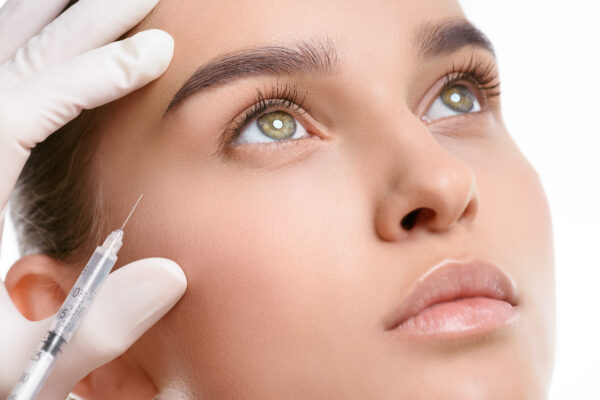
Botulinum toxin has proven to be a remarkable treatment for a range of movement disorders, including blepharospasm – the uncontrolled blinking, narrowing or closing of one or both eyelids that is considered a type of dystonia. Onabotulinum toxin A, also called by the brand name Botox, was approved by the U.S. Food and Drug Administration in 1989 for treating this condition which, until that time, had no effective clinical or surgical treatment.
Initial studies showed that doses of 25 to 50 U were effective for blepharospasm with few side effects. Adverse effects that could happen include blurred vision, ptosis (eyelid drooping), cornea problems and eye dryness. While there is no good randomized and controlled efficacy data to support use of Botox for blepharospasm, studies have shown it to be safe and effective. As many as 90 percent of patients in some studies have seen benefit.
More About Botox For Blepharospasm
Allergan, the makers of Botox, promote Botox for blepharospasm through online content. On a website devoted to the topic, the company points to three studies that show effectiveness, including the one in which 25 of 27 patients – or 90 percent – improved in just 2 days.
Doctors noted in another study that they could more easily hold open the eyelids of patients treated with Botox than before treatment.
Botox treatments block the signals to nerves that cause blepharospasm and usually have to be repeated every 3 months for continued effectiveness. They can be used on patients as young as 12 years old.
Train To Improve Patient Lives With Botox
Dentox trains medical and dental professionals in therapeutic and cosmetic uses of Botox and related products. To learn from Botox training originator Dr. Howard Katz how to inject Botox and improve patient lives, sign up or reach out now. It’s a good career decision and a great way to keep up with your competitors.
Botox For Migraine Offers Lower Cost And Higher Persistence Than Newer CGRP mAbs
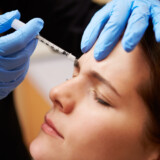
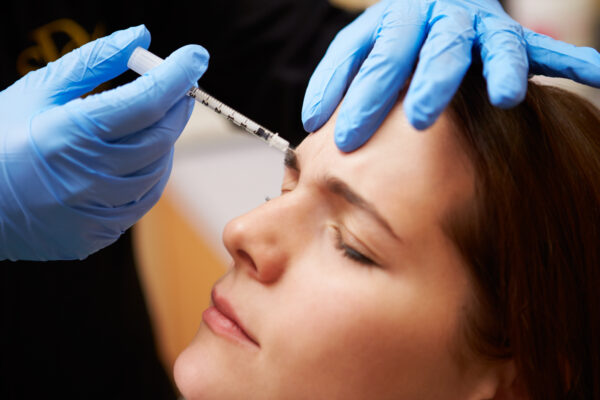
A study presented at this year’s American Academy of Neurology Virtual Annual Meeting offered important new data about how much it costs to be treated for migraines with onabotulinumtoxinA – usually called by its widely recognized brand name, Botox – and how likely patients are to return for future treatments.
While it has long been known that Botox provides a significant reduction in the duration, severity and frequency of migraine headaches for many patients, the new research took a look at a year of real-world data and found that patients who got Botox injections for migraines were more likely to return for additional treatment and that patients paid less for migraine treatment overall than they did when turning to newer CGRP mAbs treatments.
Calcitonin gene-related peptide monoclonal antibodies (CGRP mAbs) are a relatively new treatment for migraines that have been considered revolutionary because they are the first preventative medicine for migraines developed specifically for the purpose. All other preventatives were developed for other purposes and later found to be useful for migraines.
The CGRP mAbs treatments involved in the study include Eli Lilly’s Emgality (or galcanezumab), Amgen’s Aimovig (or erenumab) and Teva’s Ajovy (or fremanezumab).
What The Study Found About Botox For Migraine
The analysis of past insurance claims by AbbVie, the parent company of the maker of Botox, looked at nearly 2,700 adult claims on commercial insurance or Medicare for chronic migraine that involved treatment with either Botox or CGRP mAbs. Nearly 41 percent of patients treated with Botox persisted with the treatment while less than 28 percent treated with CGRP mAbs persisted.
The finding was surprising because CGRP mAbs treatments are often considered more convenient and comfortable than Botox since only a single injection is necessary per treatment – an injection that can be done at home.
AbbVie also looked at cost differences between Botox treatments for migraines and CGRP mAbs. After necessary adjustments, the analysis found that treatment costs were similar. Botox treatment, however, resulted in much lower costs for acute migraine medicines – a difference of $639 vs. $883 for the year. Botox treatments also resulted in lower costs of oral preventatives for the patients, at $313 vs. $413. Additional research could later determine specific reasons for the differences, which might include factors involving insurance coverage, tolerability or efficacy.
Hundreds Of Millions In Revenue With Botox For Migraines
Both Botox and CGRP mAbs are intended to be provided as a third-line therapy option for patients with chronic migraines who didn’t get good results from two of the daily preventatives usually prescribed. These include beta-adrenergic receptor blockers, antidepressants, calcium antagonists and anti-epileptics.
AbbVie’s study found that those with migraines are more likely to stick with Botox treatments and spend less per year on preventatives and acute treatment medicines than those who choose CGRP mAbs, which may be more convenient.
Further, Botox has proven through years of use to be well-tolerated by patients and to reduce migraine symptoms when given every 3 months. It can also help with shoulder and neck pain, which may accompany migraines. It is used to treat patients who have at least 15 migraine headaches per month but do not respond to first-line and second-line treatments.
Research has shown that CGRP mAbs treatments given once a month or once every 3 months as recommended by the maker can reduce average monthly migraine days for patients. Still, Botox for migraines is expected to generate more than $268 million in revenue by 2030 in the 7 nations where it is prescribed most.
Get Your Share Of The Revenue
If you’re a medical or dental professional considering adding Botox for therapeutic and cosmetic purposes to your practice, train with Dentox to learn from the best. Dentox training is offered in person, online and on demand and is led by Dr. Howard Katz, the original of Botox training. Reach out now to learn more or sign up for expert training from the company that started it all. You deserve your share of Botox revenue – and your migraine patients deserve proven Botox for migraine.





